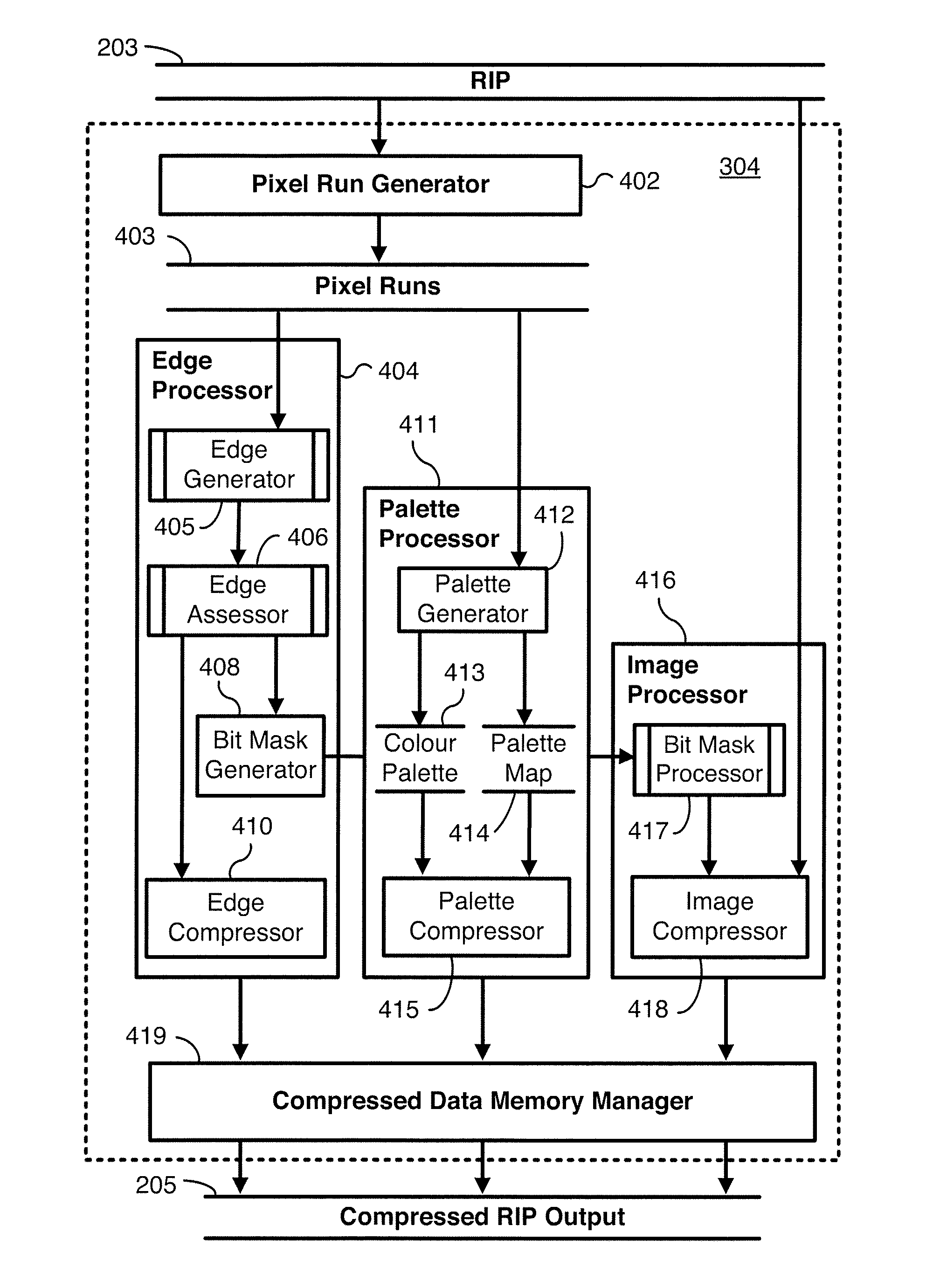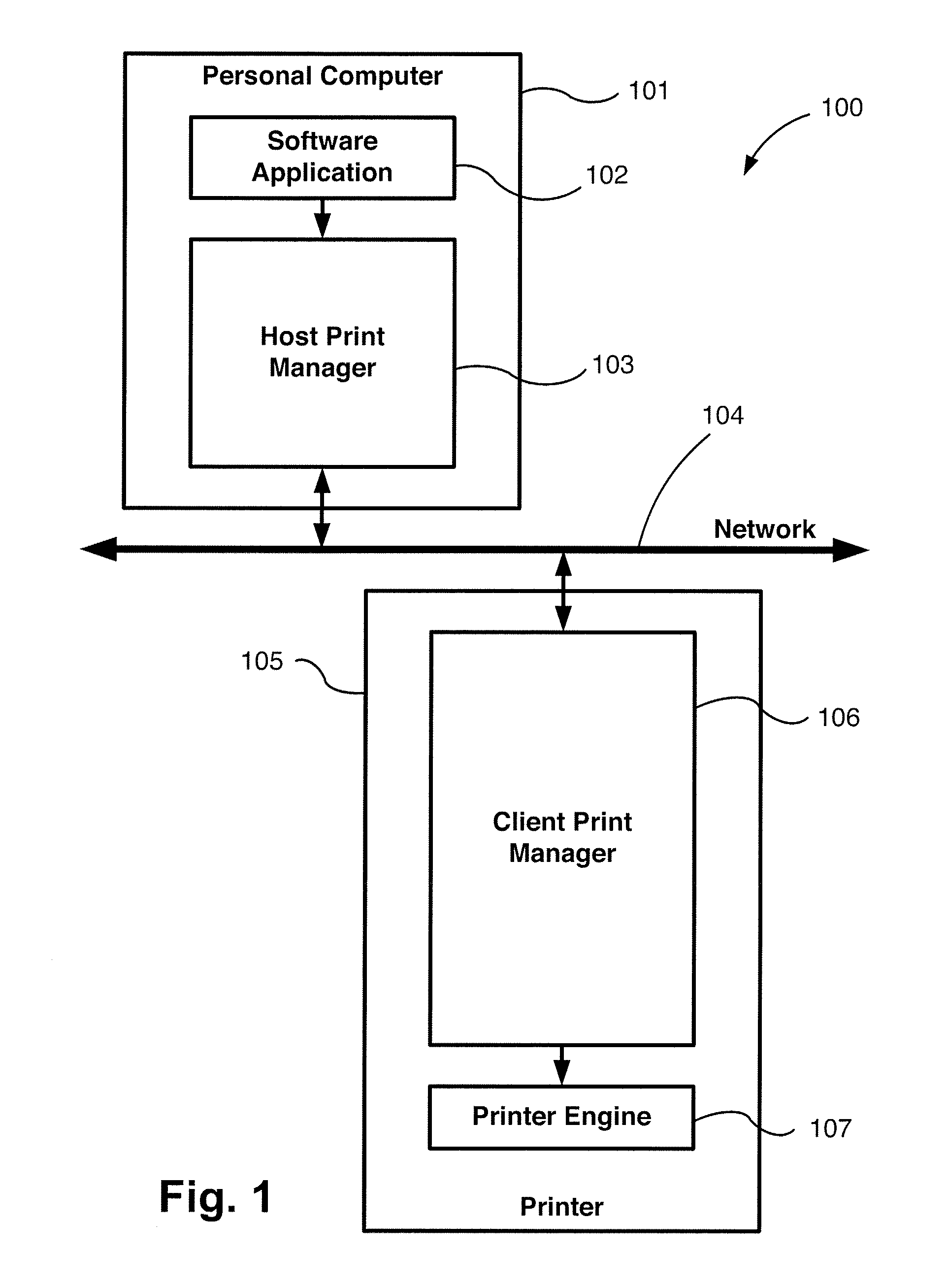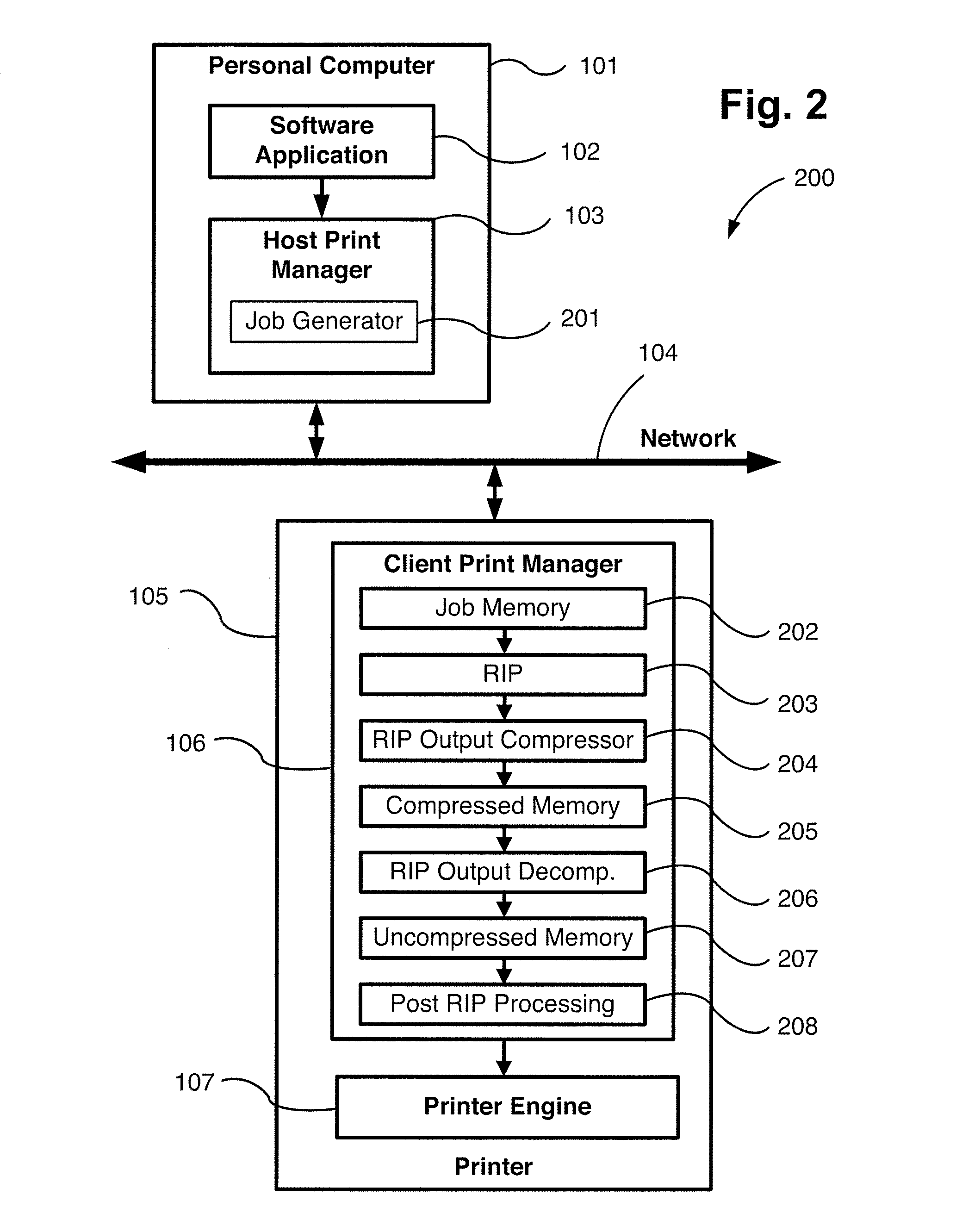Method and Apparatus For Hybrid Image Compression
a hybrid image and compression technology, applied in the field of methods and apparatus, can solve the problems of prohibitively expensive algorithms, lossless pixel-based methods such as jpeg-ls suffer from the same drawbacks as lossy pixel-based methods, and documents containing sharp transitions in colour such as basic text or graphics can suffer from the introduction of visible artifacts
- Summary
- Abstract
- Description
- Claims
- Application Information
AI Technical Summary
Benefits of technology
Problems solved by technology
Method used
Image
Examples
second embodiment
Improved Image Compression
[0208]Tiles that contain a mixture of flat pixels and image pixels in a manner causing Compression Path Type 5 to be used (i.e. hybrid tiles for which the palette has overflowed) are further processed in an alternative embodiment to optimise both speed and quality. This is achieved by using data provided by the bitmask. If the bitmask contains some “false” values, then there are some non-image pixels that do not need to be compressed using the Image Processor 416 and can therefore be either ignored or overwritten to make the task of the Image Processor 416 easier.
[0209]FIG. 19A shows a typical 32 by 32 pixel tile 1900 that contains both image and flat fill data. The overlaid grid 1904 further divides the tile into blocks containing 8×8 pixels. This is typical of the dimensions of a pixel block passed to a lossy image compressor such as JPEG for example. The image processor 416 accepts both bitmap data and bitmask data. In the alternative arrangement the ima...
PUM
 Login to View More
Login to View More Abstract
Description
Claims
Application Information
 Login to View More
Login to View More - R&D
- Intellectual Property
- Life Sciences
- Materials
- Tech Scout
- Unparalleled Data Quality
- Higher Quality Content
- 60% Fewer Hallucinations
Browse by: Latest US Patents, China's latest patents, Technical Efficacy Thesaurus, Application Domain, Technology Topic, Popular Technical Reports.
© 2025 PatSnap. All rights reserved.Legal|Privacy policy|Modern Slavery Act Transparency Statement|Sitemap|About US| Contact US: help@patsnap.com



